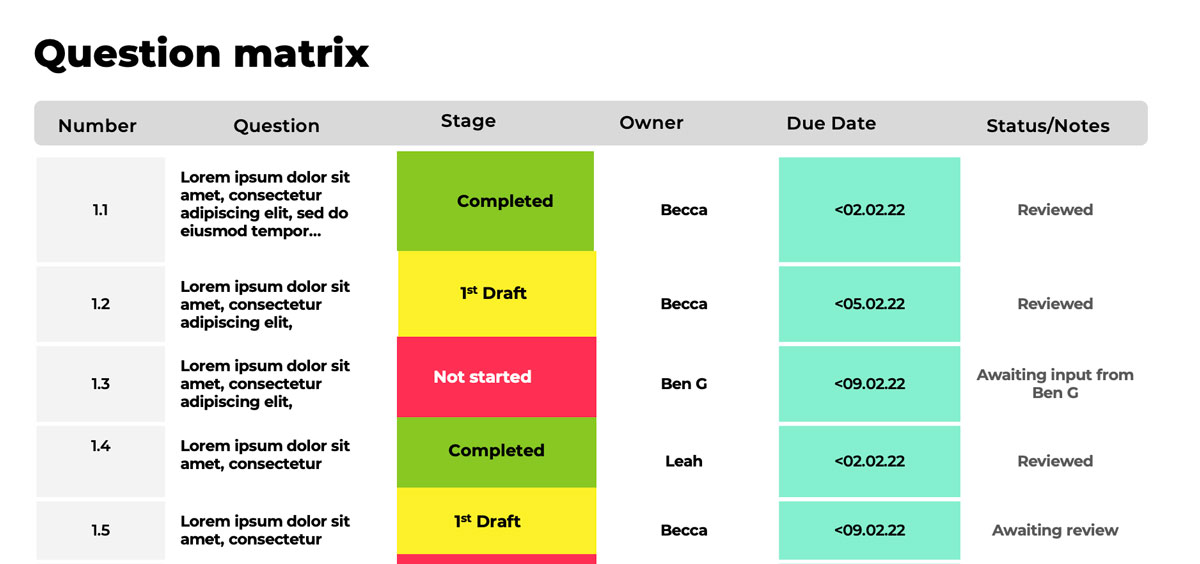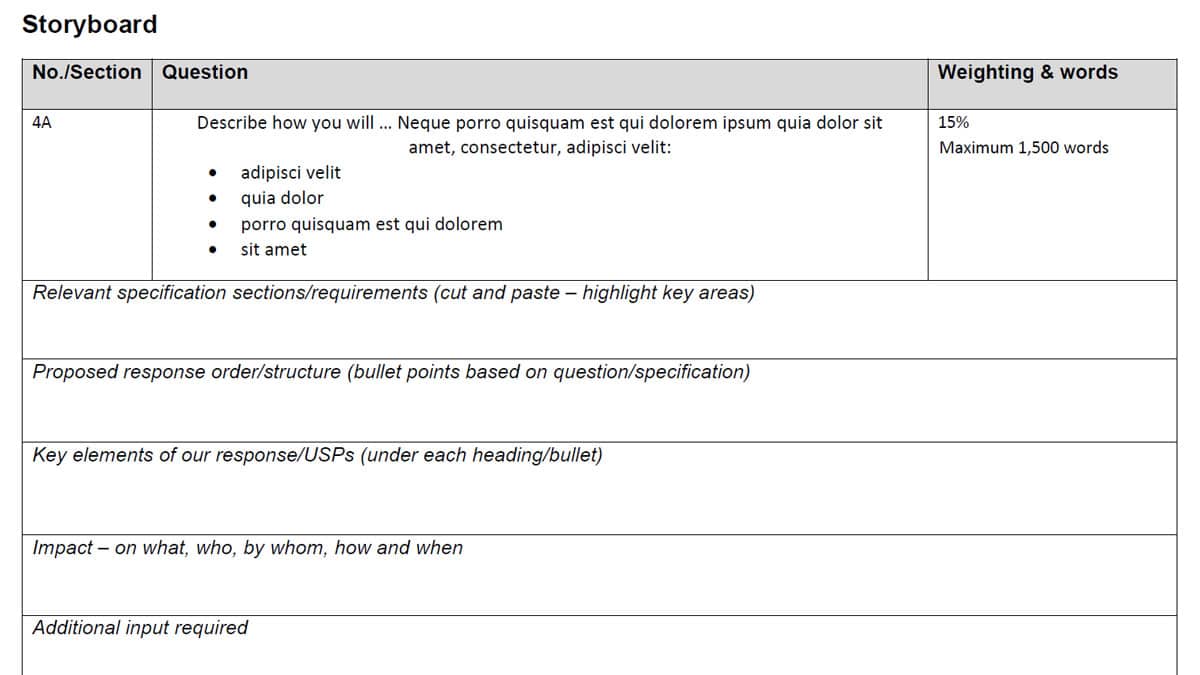

Bidding for tenders is stressful at the best of times. And this goes double if it’s your job to manage the process.
You’ll have many time-sensitive elements to draw together, subject matter experts to consult, other colleagues to coordinate – and all the while, the clock is ticking. With all that pressure on your shoulders, having a consistent, repeatable bid planning process to manage both information and people will make your life easier by far. And if bidding is just one part of your role, a clear and structured bid management plan will be indispensable.
Getting the bid management process right means you don’t miss things – often those small margins between success and failure. And when your team know exactly what they need to do and when, you spend less time chasing, re-writing, improvising and finding yourself buried under an increasingly unsustainable load.
In this guide, we’ll cover the bid management process, step by step.
Identify the right opportunities
Call it obvious, but finding the right opportunities to bid for starts with knowing where to find them in the first place. There are myriad online tender portals, and you need to be registered with the right ones based on your line of business or customer base.
Pick your portal
Local authorities use online portals like Pro-contract (Proactis) for end-to-end tender management. Here you’ll find downloadable tender documents, online pre-qualifying or standard selection questionnaires (SQs/PQQs), document uploads and a log of clarification questions and answers. If you’re competing for local authority contracts in a particular city or region, you can check which tender portals councils local to you use on the procurement pages of their websites.
Government and NHS tenders can be found on Contracts Finder and Find a Tender (for higher value contracts). NHS Digital also has a helpful opportunities pipeline tracker identifying upcoming high value (£150K+) tenders.
If you’re bidding for private sector tenders, there are a number of dedicated tender tracker portals out there, such as Tracker Intelligence. For a fee, many contract-tracking websites will identify and flag suitable opportunities for you (in both the public and private sector). This is a handy option if you’re pushed for time to regularly search yourself.
Narrow your options with bid/no bid
So now the opportunities are starting to come in. Your next step is to create checks that ensure head rules heart, otherwise known as the bid/no bid process. You only want to dedicate your valuable time and resources to bids you’ve got a realistic chance of winning.
You’ll find more guidance on making bid/no bid decisions in this article, but here are a few strategic and practical factors you should consider before you come to a decision:
Competitor analysis
As in sport, there’s risk in focusing too much on the opposition’s strengths and not your own. However, if you know a competitor has a particularly successful offer in one or more of the buyer’s priority areas, you’ll need to match it. Or, if you’re up against an incumbent with a strong local reputation and performance, you’ll need to have something innovative and compelling ready to unseat them.
Win themes
You should know from previous bids and market trends what it is you offer that trumps the opposition: your USPs.
Does the tender play to your strengths? Does it offer plenty of scope to keep hitting those winning notes, or do you risk trying to wedge your well-rounded offer into a square hole?
Pricing
Buyers are looking for the best possible value, with scoring often weighted in favour of the lowest-priced bids. Look at the scoring formula and make sure you can afford to offer your products/services at a winning price, leaving enough budgetary headroom to avoid risking a future loss-maker.
Time or resources required
How big or complicated is the tender? However tempted you are, be honest with yourself about the time and resources needed to do it justice. Remember that a poor-scoring, slapdash bid may stick in the buyer’s mind the next time you want to tender for business with them.
For smaller, standard bids, this simple process should be enough to help you make the right bid/no bid decision.
With more complex tenders, you may need input from other colleagues or departments in your organisation to reach the right decision. Keep your eyes peeled for potential gremlins as you get into the detail of the tender too. For instance, there may be a requirement to take on existing staff from another provider under Transfer of Undertakings (Protection of Employment) regulations. In that case, your HR team may have to calculate the implications for pension contributions or annual leave entitlement.
This process isn’t always quick or easy. You may need to go back to the buyer to ask for more information via the tender clarification log (note that this is visible to all bidders). Or the person you need to consult might be on leave for the next week. At this point, you have to make a call as to whether to go ahead and risk having to abandon it further down the line or pause and risk losing valuable days.
Review the tender documents
Once you’ve decided to go ahead, the first thing you need to do is get the basics in place. This means going through the tender documents thoroughly, noting the core requirements to ensure your bid is compliant. There are a range of things to look out for:
- What supporting documents do you need to supply – accounts, professional registrations and certifications, a staff structure? Note the format they need to be in.
- When is the deadline for submission and are there any specific instructions for uploading to the portal?
- Is there anything you need more clarity on? Note the deadline for asking clarification questions. This is usually a week or so before the submission deadline.
- Who in your organisation is going to be the main contact for the tender? This will probably be someone in a senior management position. Do you need an electronic signature for them?
- Do word count limits include text in diagrams, charts and picture captions? (In my experience, this is the most common opening clarification question.)
- Do they specify the font, font size and line spacing you have to use?
You’d be surprised how often these basic details get passed over and result in last-minute panic. Include a checklist at the top of your bid planning documents so there is no excuse for them to be overlooked.
Next, review the quality questions and divide them up between those working on the tender. Assign work according to people’s strengths or experience in answering comparable questions. Identify where subject matter experts (SMEs) will need to contribute and who will coordinate with them, giving the SMEs as much notice as possible.
Ensure someone is tasked with keeping the bid ticking over, including monitoring the clarification log and the progress of drafting the questions (more on this below).
If you’re at a small organisation, you may outsource some aspects of your operation, such as HR. Think about whether you need support from external partners to answer any questions in full.
Plan for success
Now you have dealt with the nuts and bolts of the bid management process, you can start planning the delivery of the project from start to submission.
Devise your win strategy
Now’s the time to clarify your win strategy for this tender. You need to have the win strategy front of mind at every stage, as it will inform your planning, writing, checking and editing of the bid.
If you tender regularly, you’ll have a good sense of where your strengths lie. You know your market, including what your competitors are likely to have up their sleeves. Analysing buyer marks and feedback from previous bids will give you a good sense of your USPs.
Carefully review the tender specification to identify the buyer’s needs and priorities. Take note of where you need to tailor your standard responses to this opportunity and where you can push and reinforce those USPs.
Capture the win themes you’ve identified in a single document. Break them down into clear categories, like previous experience, track record/performance, innovation and added value, workforce, testimonials and so on. Add the relevant win theme(s) to the storyboard for each question (more on storyboards soon).
If you’re new to this market or trying to get your foot on the ladder, don’t despair. Research aside, you gain many of these insights through bidding and seeing what comes back.
Any bidder can maximise their chances of winning by following one basic rule: cover (or at least reference) every single requirement and theme that’s in the specification.
Thorough is always best. Including a point that may seem mundane and insignificant, like confirming you can supply reports in different formats, might just earn that extra half mark that tips the balance.
Create project and response plans
Your project plan is about the who, what, when and how of the bid process. It should cover the resources you need to complete your bid and the stages you will go through to get there within the designated time frame. The plan should also capture your objectives and how you are going to deliver them.
With a large team, you may benefit from one of numerous online project management packages, either paid for (such as Notion) or free (like Google Spaces or Trello). These allow you to assign writing and other tasks and to track progress, set priorities, add notes, ask questions of colleagues and add comments in real time.
Useful planning templates
If it’s just you or you’re part of a small team, you may prefer to keep it simple and low tech. Easy-to-follow templates in Excel, Word and even PowerPoint stored in your ‘Project plan’ folder can be just as effective for tracking and monitoring progress.
Here are some suggestions based on templates I’ve found useful over the years. You’ll have the opportunity to download these templates at the end of the article. Adapt them to reflect the specifics of the tender.
Bid summary
A bid summary is a simple, go-to reference document outlining the nature of the opportunity and what it involves. It’s particularly useful if you need support from senior management or SMEs who don’t need to know the minutiae of the whole tender, just a high-level overview.
Useful things to include are:
- the buyer
- the contract name
- a brief description of the opportunity
- the value of the contract
- the deadline for submitting clarification questions
- the bid team members
- the bid submission deadline and method
- the contract award date and implementation period (if relevant)
- the contract start and end dates (including the possibility of extensions, if any)
- whether this is a new or existing contract
- the evaluation criteria/basis of award (eg ‘60% quality, 40% price’)
- any specialist requirements outside of writing the bid (eg the need to acquire property or to recruit)
- any relevant existing contracts or relationships (eg other contracts with the same buyer or relationships with comparable organisations)
- any identified risks of taking on the tender
- your reasoning for the bid/no bid decision
- space for any other notes.
Click image to enlarge in new tab
Open image description
Bid summary extract with a heading of ‘Strategic overview’ with multiple labelled fields to fill in. The labels are ‘Buyer’, ‘Contract name’, ‘Brief description of opportunity’, ‘Value’, ‘Clarification question deadline’, ‘Bid team’, ‘Contract start date / go live’, ‘Bid submission deadline date and method’, ‘New/existing contract?’ and ‘Contract award date’.
You can adjust or add more detailed fields for context or to reflect the market you’re operating in.
The bid summary document is also useful for introducing the tender to the team at an initial kick-off meeting.
Question matrix and timeline
You will need a live document that gives you an instant snapshot of progress and what is still outstanding at any given moment. It could be a Trello checklist or a Gantt chart of a shared Excel spreadsheet with RAG-ratings to denote the status of each question:
- red = not started
- amber/yellow = in draft
- green = completed.
At minimum, it should contain the questions, their assigned owners, due dates, writing stages and notes.
Click image to enlarge in new tab
Open image description
Example question matrix slide with headings along the top and rows of example text filling the fields below. The headings are ‘Number’, ‘Question’, ‘Stage’, ‘Owner’, ‘Due date’ and ‘Status/Notes’.
Under the heading ‘Number’ are the numbers 1.1, 1.2, 1.3, 1.4 and 1.5 and there is placeholder text (Lorem ipsum) against each in the ‘Question’ fields.
Under the ‘Stage’ heading, where the field says ‘Completed’, the cell is coloured green; where it says ‘First draft’, the cell is yellow; and where it says ‘Not started’, the cell is red.
Example names of team members appear under the heading ‘Owner’ and example dates under ‘Due date’.
Three of the cells under ‘Status/Notes’ read ‘Reviewed’, one reads ‘Awaiting input from Ben G’ and another reads ‘Awaiting review’.
As mentioned above, adding a simple timeline of the bid’s key dates and milestones gives people ample warning and dates for their diaries. It can be as simple as:
First draft completed > first draft reviewed > final draft completed > final draft reviewed > SQ completed > SQ reviewed > submission date.
A timetable of the meetings you’ll have for the bid, from the initial kick-off meeting to final review, is also helpful.
Click image to enlarge in new tab
Open image description
Example slide titled ‘Timeline and milestones’.
The layout has the weeks leading up to the submission date listed across the top and activities relating to each underneath.
Under ‘Week one: Planning and requirements’, are these bullet points:
- Bid summary
- Kick-off meeting
- Question assignment (inc. SMEs)
- Question matrix
- Storyboards created
Under ‘Week two: First drafts’, are these bullet points:
- First drafts started/completed
- Clarification questions identified/submitted
Under ‘Week three: First draft reviews / final drafts started’, are these bullet points:
- First drafts reviewed and feedback supplied
- Progress review meeting
- Second drafts begun
Under ‘Week four: Final draft’ are these bullet points:
- Final drafts completed
- Final drafts reviewed
- Whole tender proofread and signed off
And under ‘Submission (date): Submission’ are these bullet points:
- Tender uploaded to the portal on xx/xx/xxxx
- Receipt of tender confirmation circulated
Ensure everyone directly involved in the tender has the right permissions to access and edit the question matrix. It’s a good idea to remind your team to update the tracker at your weekly meetings.
Most SQs/PQQs will ask for evidence of your compliance with various requirements, such as financial standing and experience. You can create a separate matrix to track your progress in sourcing documents like accounts, registrations and policies. Or you can include this in the question matrix.
The completed bid will need proofreading to ensure consistency of tone and terminology, as well to pick up any errors or typos. Decide who will be doing this at the start of the process – you may even want to buy in a professional fresh set of eyes.
When you assign responses to your bid writers, be realistic about timescales. Try and build in a cushion of an extra day or two for each stage: bids rarely go 100% to plan. There’s always likely to be something outstanding that is beyond your control.
Storyboards
A simple storyboard for each quality evaluation response is an invaluable tool for bid writers as they plan their responses.
A storyboard takes each individual question and identifies all the key elements that need to be included. Taking what the buyer is asking for as the starting point, it provides a systematic drill-down into how to construct a winning answer. A bid storyboard template should include:
- the question, including the number or section, the weighting and word count
- the response’s structure (broken down into headings)
- the key elements of your response under each heading, including those win theme USPs
- what the impact of your solution will be (on what or who, by whom, how and when)
- what additional information, graphics and data you need to include.
Click image to enlarge in new tab
Open image description
Excerpt of storyboard table. Across the top are three headings and corresponding fields to fill in. These are to identify the question: ‘Number/section’, ‘Question’ and ‘Weighting [in percent] and words [maximum word count]’. Underneath this are more fields to fill in. The fields are labelled:
- Relevant specification sections/requirements (cut and paste – highlight key areas)
- Proposed response order/structure (bullet points based on question/specification)
- Key elements of our response/USPs (under each heading/bullet)
- Impact – on what, who, by whom, how and when
- Additional input required
Once you’ve mapped all this out, you will have the basis of your responses that you can then flesh out, always keeping the win themes in mind as you do. Be sure to trawl your bid library (if you have one) for existing content that directly answers, or can be adjusted to answer, the different elements of the question.
Get the best from your SMEs
Bid writers aren’t operational experts. Often, we need the expertise of the people who actually do the work to give us the material we need for the responses.
But neither are the experts bid writers. They may be proficient writers, but without guidance and support, what they actually write about might not be what you need.
Developing a storyboard for the SME helps provide a clear structure for them to work from. Their job (and ultimately yours) will be much easier if you give them a brief on the key themes and USPs to hit under each section. This should provide guidance on what to include and how to approach it, for example, ‘Start each response with a statement reflecting the relevant win theme.’
If you have one, include your in-house style guide to help them focus on readability and consistency as they write. The guidance should cover advice on clear writing, as well as other tips like how and when to use acronyms, terms to avoid and how to introduce and punctuate bullet points.
SMEs are busy people with day jobs to do, so make their life as easy as possible. Set up a call to run through the brief and storyboard with them and find out if they’ve got existing material that they can adapt to save time.
Review and edit responses
Regular reviews are vital throughout the bid process. Be sure, too, to allow time to thoroughly check and proofread the full document before the final submission.
During reviews, don’t let perfectionism be the enemy of progress. Early drafts will often have gaps. But make sure writers know to add clear notes to any of these gaps on what’s still needed, who is responsible for it and when to expect it. Accompanying the draft with the response storyboard will give the reviewer the context and rationale for the answer’s direction of travel.
If it’s your job to review or proofread the completed bid, block out enough time to be able to read everything with fresh eyes and understand the nuances of each question. Editing 20,000 words of complex copy in one sitting will leave you cross-eyed and liable to miss things.
How the reviewer frames feedback is also crucial to the process. Vague comments like ‘I’m not sure this flows well’ or ‘This needs reworking’ are confusing and dispiriting without context. So give it.
‘This needs reworking’ should be followed by why and some constructive suggestions, like ‘It would read better if we started with XYZ and linked it to ABC. This will let us finish by pushing DEFG as the solution.’ You can also offer a ‘How about something like this …’ if you have a clear idea of exactly what you think it should say.
A note on version control
Poor version control can cost bid writers valuable hours reviewing redundant content. It is annoyingly easy to lose track of which is the right version of a response, especially if more than one person is involved in working on the answer.
To avoid any doubt, stress the importance of clear titles for each version, including the question number and subject, version number (v1, v2) and date completed. Or use a shared application like Google Docs to create a live, editable working document that updates automatically but retains a record of previous versions.
Submit with time to spare
It is tempting to keep polishing the bid to the last minute. But starting to upload your bid documents an hour before the deadline leaves you vulnerable to something going wrong with no time to fix it. Buyers will stick rigidly to deadlines unless the problem lies at their end.
It may be unlikely, but what if that’s the day your internet goes down or you inexplicably can’t log in to the portal? It’s not worth running the risk of all that effort going to waste and the fallout that will accompany that.
As a rule of thumb, aim to submit 24 hours before the deadline. This leaves you time to resolve any issues and ensure a minor headache doesn’t become a disaster. It also curbs the temptation for others to leave things to the last minute.
And double-check the exact time of day of the submission deadline. They do vary, usually between noon and close of the business day (5pm).
Look back, learn and improve
Each individual bid you produce is part of a wider bid management process. Unless you’ve achieved 100% marks (which never happens!), there will be areas for improvement in even the most high-scoring bids. Conversely, taking the time to review your results will also highlight the elements of the bid that went down particularly well with the buyer.
Reconvene the team who worked on the tender. Before drilling down into the buyer’s marks and comments, examine the bid management process itself and capture feedback from the team. Did it work well? Was everyone clear on what they needed to do and when? Was the bid timetable realistic? Where were the bottlenecks or issues getting content or supporting material? Has anyone got any suggestions on how the bid planning process could be improved?
Then it’s time to review the feedback, which can vary wildly in level of detail. Some buyers will supply a question-by-question narrative as to why they settled on the mark they did. The most conscientious may even detail how your response compared with the winner’s. Others will just give you your scores, with no further context. When this happens, go back and ask for feedback. The buyer may not oblige, but it should be in their interest to do so to encourage better bids in future.
Cool and dispassionate heads are needed here, especially if you’ve been unsuccessful. When you’re so close to something, it’s hard to take criticism, especially if you feel you adequately covered something you’ve been marked down for or the buyer has missed something you thought was important.
Produce a question-review template as a guide, with columns for the question (including weighting and word count), marks, buyer feedback and your collective response. On questions that scored poorly, identify areas of weakness and what actions are needed to strengthen your answers.
Where you’ve scored well, identify the small areas of improvement needed to get to a perfect score (in theory). Add the copy to your bid library to save you time the next time around.
A repeatable route to your goals
Managing the bid process can feel like trying to steer a juggernaut to a target location against the clock. And tenders rarely travel in a straight line – they have an annoying habit of deviating and running over all kinds of bumps along the way.
Happily, it’s in your power to keep those bumps in the road from turning into the bidding equivalent of a motorway pile-up. With a clear, systematic bid management process like this one to guide you, you’ll have a smoother journey to your destination – and you’re much more likely to find success when you get there.
Want more hands-on help with your bidding? Have a look at our bid consultancy services or bid-writing training and get in touch if you’d like to chat about options.
Main image credit: T.Dallas / Shutterstock









